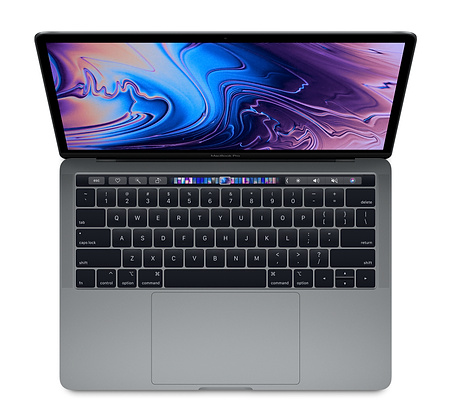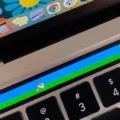Are you having trouble with your MacBook Pro from 2019? It could be an issue with the System Management Controller (SMC). Resetting the SMC can help to resolve issues like a slow fan, unexpected shutdowns or restarts, and other hardware-related issues.
In this blog post, we’ll go over how to reset the SMC on your MacBook Pro from 2019. Resetting the SMC is a relatively simple process that can be done in just a few steps.
Before you start, make sure that your Mac is unplugged from its power source. Once it’s unplugged, shut it down completely by pressing and holding the power button until it shuts off.
Next, press and hold down the following keys on the keyboard: “Shift + Option + Control” and then press and hold down the power button simultaneously for 10 seconds. After 10 seconds have passed, release all of the keys at once, then wait a few seconds before pressing the power button again to turn on your Mac.
If this doesn’t resolve the issue, you’ll need to repeat these steps but with an additional step: unplugging your Mac’s power cord for 15 seconds before pressing and holding down these keys again for 10 seconds.
And there you have it! That’s how to reset your SMC on your MacBook Pro from 2019. If you’re still having any issues after resetting your SMC, please reach out to Apple Support for further assistance.

Resetting PRAM and SMC on MacBook Pro
Resetting PRAM (parameter random access memory) and SMC (system management controller) on your MacBook Pro can help resolve some technical issues.
To reset PRAM:
1. Shut down your Mac.
2. Turn it back on and immediately press and hold the Option, Command, P, and R keys simultaneously until you hear the startup sound twice.
3. Release the keys after hearing the sound a second time.
To reset SMC:
1. Shut down your Mac
2. Press and hold the left Shift+Control+Option keys on the keyboard along with the power button simultaneously for 10 seconds.
3. Release all the keys and then press the power button to turn your Mac back on again.
Resetting the SMC on a MacBook Pro M1
To reset the SMC on your MacBook Pro m1, you will need to first shut down your Mac. Once it is powered off, press and hold the power button for 10 seconds. Then release the power button and wait a few seconds before pressing it again to turn your Mac back on. If this does not resolve your issue, you will need to shut it down again and unplug the power cord for 15 seconds before powering it on again.
Resetting SMC on Mac Without T2 Chip
To reset the System Management Controller (SMC) on a Mac without a T2 chip, you’ll need to shut down the computer and press and hold the Control, Option, Shift, and Power keys simultaneously for 10 seconds. Once you’ve released all of these keys, use the Power key to restart your Mac. This should reset the SMC and allow your computer to start up correctly.
The Safety of SMC Reset for Macs
Yes, SMC reset is generally safe for Mac computers. It is a process used to reset the System Management Controller (SMC) which manages the power, battery, and other functions on your Mac. Resetting the SMC can help resolve hardware issues such as your computer not starting up or displaying unexpected behaviors. While there is a tiny risk of damaging your Mac with an SMC reset, it is very unlikely and in 99.9999% of cases, the computer will work perfectly after an SMC reset.
Does Resetting the SMC on a Mac Delete Data?
No, resetting the SMC (System Management Controller) on a Mac will not delete any of your data. The SMC is responsible for managing certain low-level functions such as power management, thermal management, and battery charging. Resetting the SMC will not wipe any of your personal information, documents, photos, or applications. However, if you need to reset your Mac with macOS Ventura or Monterey or upgrade or download macOS Ventura, then you may lose some data in the process.
Has My Mac Undergone an SMC Reset?
In order to determine if your Mac has undergone an SMC reset, you will need to look for any changes in the system’s performance. The most common indicators that your Mac has had an SMC reset are improved fan speed, brighter display brightness, or faster start-up times. Additionally, you can check the power indicator light on the front of your Mac. If it was orange prior to the reset and is now green, then this is a sign that your Mac has successfully performed an SMC reset.
The Effects of a PRAM Reset on a Mac
A PRAM (Parameter Random Access Memory) reset on a Mac is a way to restore the default settings for your hardware and set the internal hard drive as the startup disk. To do this, you’ll need to shut down your computer, then hold down the “Command-Option-P-R” keys immediately after you turn on your computer. This will reset the PRAM, restoring settings like display resolution, speaker volume, startup disk selection, and other settings that are stored in NVRAM (nonvolatile RAM). Resetting the PRAM can help resolve issues with system performance or incorrect settings.
Performing an SMC Reset
A System Management Controller (SMC) reset can help resolve issues related to your laptop’s power, battery, fans, and other hardware. To perform an SMC reset on a Mac laptop (such as a MacBook Pro or MacBook Air), please follow the steps below:
1. Shut down the laptop from the Apple menu (Apple icon -> Shut Down).
2. Once your laptop has completely shut down, hold the Shift, Control, and Option keys on the left side of the built-in keyboard, then press the power button at the same time. Hold all four keys down for 10 seconds.
3. Release all of the keys and allow your laptop to restart normally.
4. Your SMC reset should now be complete and you should see normal behavior with your laptop’s hardware components.
Conclusion
In conclusion, resetting the SMC on a MacBook Pro 2019 can be a helpful way to troubleshoot various hardware and software issues. It’s a simple process that involves shutting down your Mac, unplugging the power cord, and pressing and holding the power button for 10 seconds. If this doesn’t resolve the issue, you may need to reset the SMC again, this time unplugging the power cord for 15 seconds before pressing and holding the power button for another 10 seconds. Following these steps should help resolve any issues with your Mac’s system management controller.








